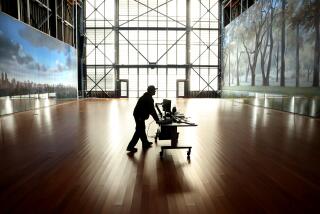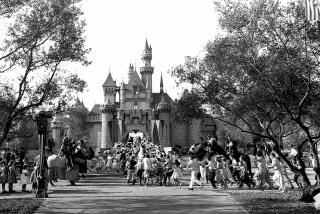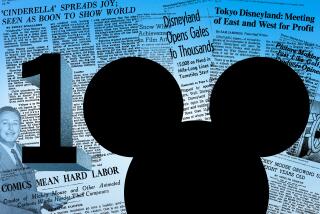The Man Behind a Mouse and Much More
Eulogized upon his death three decades ago as a modern-day Aesop, Walt Disney’s impact on popular culture will continue to be felt for centuries to come.
“There can’t be many adults in the allegedly civilized parts of the globe who did not inhabit Disney’s mind and imagination at least for a few hours and feel better for the visitation,” CBS commentator Eric Sevareid remarked on Disney’s passing.
In 1939, more than 10 years after the Chicago-born animator and entrepreneur debuted Mickey Mouse in “Steamboat Willie,” Disney moved his burgeoning studio from Silver Lake to Buena Vista Street in Burbank.
There in 1952 he announced plans to construct a small amusement park on a 16-acre site along Riverside Drive. Instead, Disney’s dreams took him to Anaheim, where Disneyland opened July 17, 1955. Sixteen years later, the company unveiled Walt Disney World in Orlando, Fla., an ever-growing resort that remains the world’s most popular vacation destination.
Today, under the aggressive leadership of CEO and Chairman Michael Eisner, the Walt Disney Co. is a mammoth kingdom of amusement parks, feature films, computer software, publishing, retail sales, Broadway productions, cruise ships, professional sports teams, record labels and the ABC television network.
Despite the legend of Disney’s allegedly frozen corpse, his cremated remains are interred in a simple plot at Forest Lawn’s Glendale cemetery.
More to Read
Inside the business of entertainment
The Wide Shot brings you news, analysis and insights on everything from streaming wars to production — and what it all means for the future.
You may occasionally receive promotional content from the Los Angeles Times.










